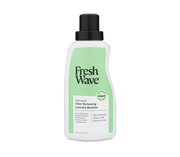How to Get Smells Out of Your Blankets
There's something incredibly comforting about snuggling into a fresh, clean blanket. Whether it's a chilly winter evening or a lazy Sunday morning, wrapping yourself in a blanket that smells clean and inviting is one of life's greatest pleasures. However, over time, blankets can accumulate various odors, from pet smells to kid-related mishaps and even that stubborn mildew scent. But fear not! In this guide, we'll explore effective methods to refresh your blankets and make them smell as good as new.
Take Back Your Blankets: Banishing Dog Smells
Dogs are wonderful companions, but their blankets can quickly take on their distinctive odor. To get rid of dog smells:
- Pre-Treat Stains: If there are any visible stains on the blanket, spot clean them with a mixture of water and a few drops of mild detergent.
- Baking Soda: Sprinkle baking soda liberally over the blanket's surface and let it sit for a few hours or overnight. Then, shake out and wash the blanket as usual.
- Use Fresh Wave Fabric Spray: Fresh Wave Fabric Spray is specially designed to neutralize odors. Spray it on the blanket before tossing it in the washing machine for an extra odor-fighting boost.
Keep Your Blankets Cozy: Defeating Cat Odors
Cats are delightful pets, but their blankets can sometimes carry a strong scent. Here's how to combat cat smells:
- Remove Cat Hair: Use a lint roller or a vacuum cleaner with a brush attachment to remove cat hair and dander from the blanket.
- Vinegar Solution: Mix equal parts of water and white vinegar in a spray bottle. Lightly mist the blanket, then air it out. Vinegar is excellent at neutralizing odors.
- Fresh Wave Laundry Booster: Add Fresh Wave Laundry Booster to your detergent when washing cat-smelling blankets. It's safe for fabrics and effective against tough odors.
Juice Spills and Other Kid Smells
Kids have a way of introducing unique odors to blankets. To tackle these odors:
- Act Quickly: The key to success is to address spills and accidents promptly. Blot up any liquid and scrape off solids before cleaning.
- Dish Soap Solution: Soak the affected area in a mixture of water and a few drops of mild dish soap. Then rinse thoroughly and wash the blanket.
- Fresh Wave Fabric Spray: Spray Fresh Wave Fabric Spray on the blanket's trouble spots and let it sit for a few minutes before washing. It will help neutralize odors effectively.
Eliminating Mildew Smells
Mildew smells can be persistent and unpleasant. Here's how to get rid of them:
- Sunlight and Fresh Air: On a sunny day, hang the blanket outside to air out. Sunlight helps kill mildew spores and freshens the fabric.
- Vinegar Solution: Mix one part white vinegar to three parts water and lightly spray the affected areas. Let it air dry before washing.
- Fresh Wave Laundry Booster: Add Fresh Wave Laundry Booster to your wash cycle. It's designed to eliminate mildew odors and leave your blanket smelling fresh.
Washing Different Blanket Materials
Let's explore how to clean and maintain blankets made from various materials, including weave, cotton, wool, down, acrylic, polyester, and vellux, highlighting their unique benefits and cleaning tips:
1. Weave Blankets:
- Benefits: Weave blankets are versatile and durable, suitable for all seasons.
- Cleaning Tips: Machine wash in cold water to prevent damage to the weave. Use a gentle cycle, and avoid fabric softeners, which can affect the weave's texture. Air-dry to maintain the blanket's shape and texture.
2. Cotton Blankets:
- Benefits: Cotton blankets are breathable, absorbent, and great for warm climates.
- Cleaning Tips: Machine wash in warm water with a mild detergent. Tumble dry on low heat or line dry to prevent shrinkage. Avoid high heat, as it can weaken cotton fibers.
3. Wool Blankets:
- Benefits: Wool blankets are excellent insulators, providing warmth in colder months.
- Cleaning Tips: Most wool blankets should be dry cleaned to prevent shrinkage and damage. However, some newer, machine-washable wool blankets can be laundered on a gentle cycle with cold water and a wool-safe detergent. Lay flat to dry.
4. Down Blankets:
- Benefits: Down blankets are incredibly warm and lightweight.
- Cleaning Tips: Check the care label, as some down blankets are machine washable, while others require professional cleaning. If machine washable, use a front-loading machine on a delicate cycle with cold water. Use a down-specific detergent, and tumble dry with tennis balls to fluff the down.
5. Acrylic Blankets:
- Benefits: Acrylic blankets are budget-friendly and mimic the warmth of wool.
- Cleaning Tips: Machine wash acrylic blankets in cold water on a gentle cycle. Avoid high heat during drying, as it can cause pilling. Air drying or using a low heat setting is recommended.
6. Polyester Blankets:
- Benefits: Polyester blankets are low-maintenance, quick-drying, and resistant to wrinkles.
- Cleaning Tips: Machine wash in warm water with a mild detergent. Polyester dries quickly, so use low heat or air dry to prevent static and wrinkling.
7. Vellux Blankets:
- Benefits: Vellux blankets are soft, plush, and cozy, making them ideal for cold nights.
- Cleaning Tips: Check the care label for specific instructions, as some Vellux blankets are machine washable. Use a gentle cycle with cold water and a mild detergent. Air drying is recommended to maintain the blanket's texture.
In Conclusion
Remember that proper care and maintenance can extend the life of your blankets, regardless of the material. Always check care labels and follow manufacturer recommendations for cleaning. Incorporate the tips mentioned in this section to keep your blankets fresh, clean, and ready for those snuggle-worthy moments.




